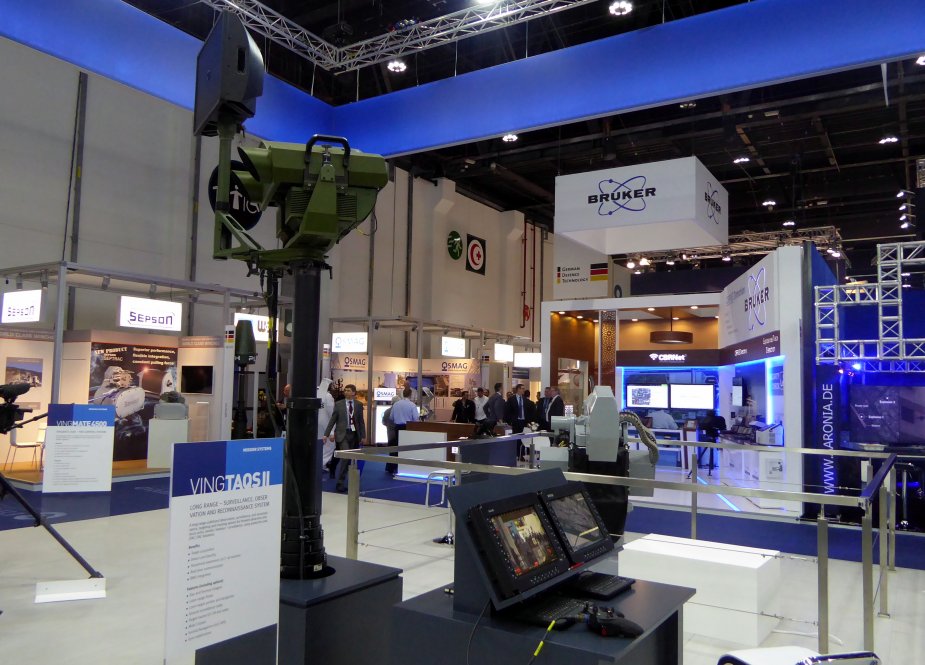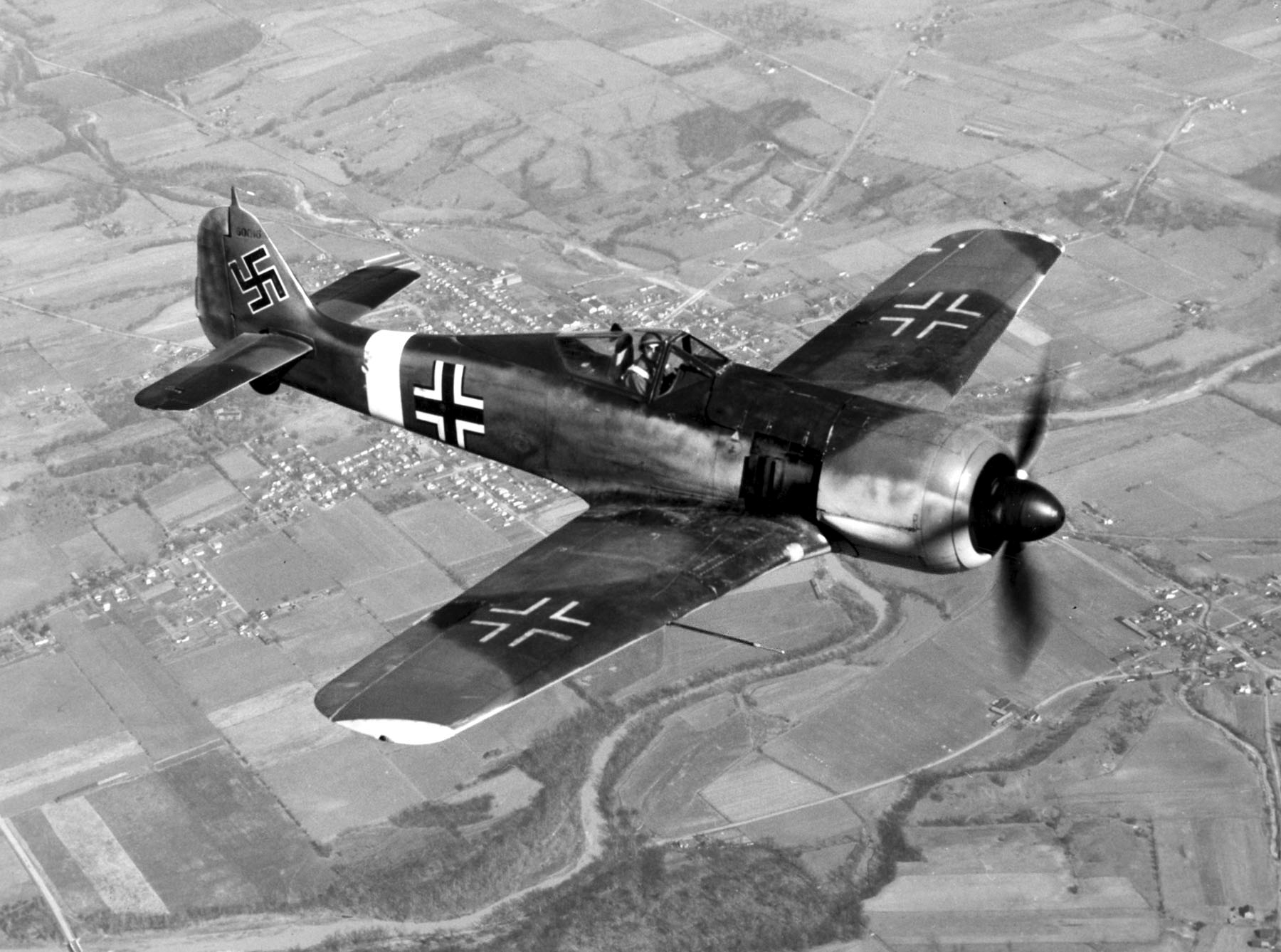
Salon IDEX 2019 cz. 2
Light turboprop combat training aircraft B-250 at the Calidus stand. Under its wings and fuselage, you can see the Desert Sting-16 and Desert Sting-35 outboard missiles on multi-beam beams and adjustable bombs of the Thunder-P31 / 32 family.
Continuing the review of the novelties of the International Defense Exhibition (IDEX) 2019, we present solutions created in companies from countries generally recognized as countries of the so-called Third World, i.e. from the Persian Gulf and Africa, as well as proposals in the field of aviation weapons, ground and air unmanned systems and means of combating them.
It is difficult to say what was the most interesting at the exhibition this year, but, of course, it is worth noting the growth in the number and promotion of local solutions, i.e. originating from countries that until recently belonged to the so-called Third World. Another trend is the multitude of offerings in the broadly understood field of unmanned systems, as well as protection against these types of threats.
One of the interesting solutions is the Al-Kinania reconnaissance vehicle from the proposal of the Military Industrial Corporation (MIC) from Sudan. From the point of view of stereotypes prevailing in Central Europe, Africa - with the possible exception of South Africa - is a natural open-air museum and a zoo (although there are places in the world that also look at us in this way). Of course, on this continent there are exceptionally many areas of poverty and tribes or communities forgotten by God and history. But you should know that there are also several countries and many companies on the Black Continent, which, upon closer inspection, can be very surprising, of course, in a positive context. And there will be more such situations from year to year.
Overview of the Al-Kinania mobile reconnaissance system (left) using the Chinese NORINCO VN4 as the base vehicle.
The Al-Kinania ground reconnaissance system uses the Chinese NORINCO VN4 armored car in the 4 × 4 system as the base vehicle, which was equipped with a radar station for observing the earth's surface, an optoelectronic unit with television and thermal imaging cameras, a pair of masts for attaching these systems , communication facilities, as well as an electrical converter or - optionally - a 7 kVA generator.
The radar operates in the X band, and its weight (without batteries and tripod) does not exceed 33 kg. It can detect ground and water targets, as well as low-flying and low-speed targets. The speed range of tracked ground targets is 2 ÷ 120 km/h, surface targets 5 ÷ 60 km/h, low-flying targets (max. <1000 m) 50 ÷ 200 km/h. The information update time depends on the antenna rotation speed, which can be switched between three values: 4, 8 and 16°/s. A target with an effective reflection area of 1 m2 can be detected by a station with a maximum range of 10 km (with a STR of 2 m2 - 11,5 km, 5 m2 - 13 km, 10 m2 - 16 km). The position accuracy of the detected object is up to 30 m in range and 1° in azimuth. The radar is mounted on a hydraulic lifting mast, but it can be dismantled and installed outside the vehicle on a tripod included in the equipment package. The IR370A-C3 optoelectronic unit combines a thermal imaging camera operating in the range of 3÷5 µm with a cooled HgCdTe detector with a 320×256 pixel matrix and a CCD television camera. The optical part of the thermal imaging camera provides focal lengths: 33, 110 and 500 m. The day camera has a smoothly adjustable focal length in the range of 15,6÷500 mm. The target detection range is at least 15 km. The optoelectronic unit was also mounted on a telescopic mast. The range of movement of its platform in azimuth is n×360°, and in elevation from -90 to 78°. The optical axis orientation accuracy is ≤ 0,2 mrad, and the platform rotation speed can reach ≥ 60°/s. Maximum angular acceleration during rotation ≥ 100°/s2. The body of the optical-electronic unit has a diameter of 408 ± 5 mm and a height of 584 ± 5 mm, and its total weight reaches 55 kg.
The local company Calidus, which was already mentioned in the first part of the report from the auto show (see WiT 3/2019), presented a mock-up of the B-250 light combat training aircraft, which is being developed jointly with foreign partners. - Brazilian company Novaer, American Rockwell and Canadian Pratt & Whitney Canada. The project was initiated in 2015 and the prototype was made for the first flight in July 2017. The airframe was made entirely of carbon composites. The above model showed the aircraft in a light combat vehicle configuration. It was equipped with a Wescam MX-15 optoelectronic warhead, and under the wings and fuselage had seven air-to-ground suspension beams. The B-250 has a length of 10,88 m, a span of 12,1 m and a height of 3,79 m. Propulsion is provided by a Pratt & Whitney PT6A-68 turboprop engine driving a four-bladed propeller. The estimated payload of the suspensions should reach 1796 kg, and the distillation range - 4500 km.
Under the wing and fuselage of the car, one could see mock-ups of the Thunder family of precision-guided aerial bombs and the Desert Sting family of air-to-ground guided missiles manufactured by Halcon Systems from Abu Dhabi. The Grom-P31 guided bomb was equipped with a combined trajectory correction system based on the INU inertial platform and a GPS satellite navigation system (GNSS) receiver. Optionally, the bomb can be additionally equipped with a semi-active laser homing system. The Thundera-P31 is based on a standard Mk 82 bomb, its length is 2480 mm, and its weight is 240 kg (warhead weight is 209 kg). Shock-absorbing fuse. When a bomb is dropped from a height of 6000 m at a speed of Ma = 0,95, the flight range is 8 km, and the possibility of correcting the flight trajectory remains until the distance from the target to 1 km, when dropped from 9000 m, these values are 12 and 3 km, and at 12 m 000 and 14 km. In the case of an INU / GNSS-based correction system, the hit error is approximately 4 m, and in the case of a laser guidance system attached to it, it decreases to approximately 10 m in the last leg of the flight. Another bomb corrected in the Halcon Systems proposal is Thunder-P3. It is very similar to the P32, but it is obvious that it was based on a classic aerial bomb of a different type. The promotional materials show the same characteristics for both, and the company's employees present at the booth did not wish to clarify this issue. The brochures indicate that the bombs are also the same size, which can be agreed upon when viewing the layouts. In the case of both versions, Halcon Systems stated that these were serial products adopted for service. In addition to mock-ups of both of the aforementioned bombs, the company also unveiled a mock-up of the Thunder-P31LR extended-range guided bomb. No information has been released on her case. A module with folding wings is attached to the body of the bomb, and under it is a cylindrical container with a solid-propellant rocket engine. The status of this project is unknown, but its purpose is apparently to increase the range of the bomb, on the one hand, due to the flight of the shaft, and on the other, due to the kinetic energy obtained from the operation of the rocket engine.
Halcon Systems is also developing the Desert Sting family of missiles to combat ground targets. At IDEX 2019, more detailed characteristics of three bombs of this family were presented: Desert Sting-5, -16 and -35. The Desert Sting-5 missile is more like a bomb, as it does not have its own engine. It has a diameter of 100 mm, a length of 600 mm and a mass of 10 kg (of which 5 kg per warhead). When dropped from a height of 3000 m, the flight range is 6 km, and maneuverability is maintained at a distance of 4 km. In the case of a drop from a height of 5500 m, the flight range is 12 km, the ability to maneuver up to 9 km, and in the case of a reset in the direction opposite to the flight, the flight range is 5 km. For a height of 9000 m, these values are 18, 15, and 8 km, respectively. For aiming at the target, the missile uses an inertial system corrected by the GPS receiver (then the hit error is approx. 10 m), which can be supplemented by a semi-active laser guidance system (the hit error is reduced to 3 m). A blow fuse is standard, but a proximity fuse can be used as an option.
In addition to the basic versions of the Thunder-P31 / 32 bombs, Halcon Systems also showed a layout of the Thunder-P32 Long Range guided bomb.
The company also introduced alternative variants of the Desert Sting-5 long-range bomb. They have large bearing and steering surfaces, as well as a drive. One uses a solid-propellant rocket motor, while the other uses what is believed to be an electric motor driving a two-bladed counter-rotating propeller.
Rocket Desert Sting-16 at first glance is very similar to the base Desert Sting-5
- also does not have its own drive, but by design it is just an enlarged “five”. Its length is 1000 m, hull diameter is 129 mm, weight is 23 kg (of which the warhead is 15 kg). The manufacturer also offers an option with a warhead weighing only 7 kg, then the weight of the projectile is reduced to 15 kg. The range and maneuverability of the Desert Sting-16 are as follows: when dropped from a height of 3000 m - 6 and 4 km; at 5500 m - 11, 8 and 4 km; and at an altitude of 9000 m - 16, 13 and 7 km. For guidance, an inertial system corrected by the GPS receiver was used, providing a hit error of about 10 m.

